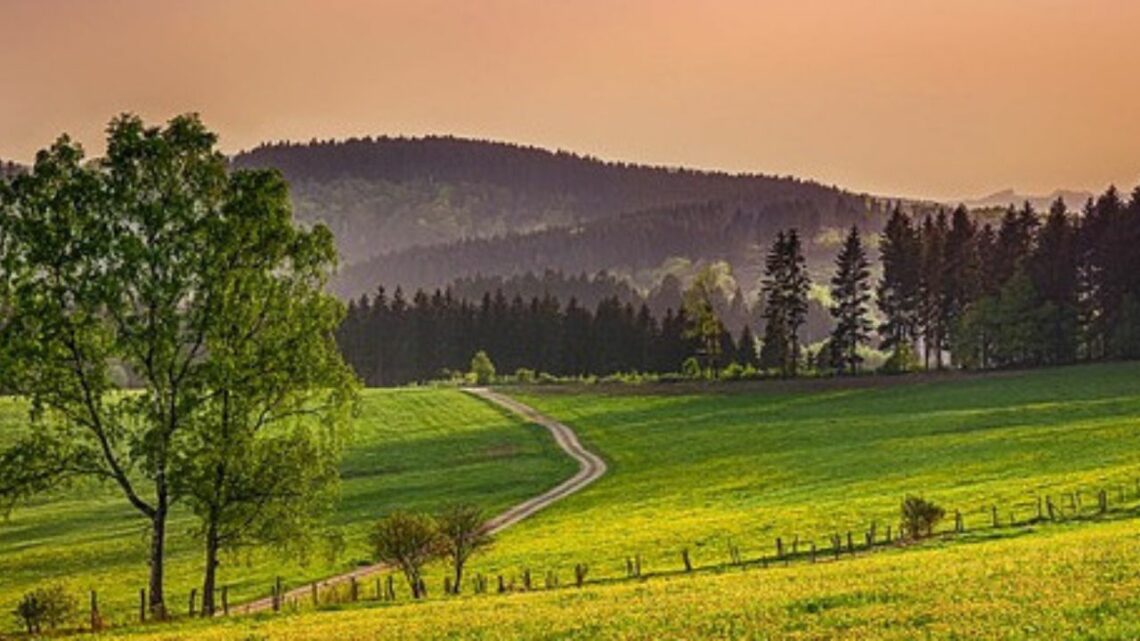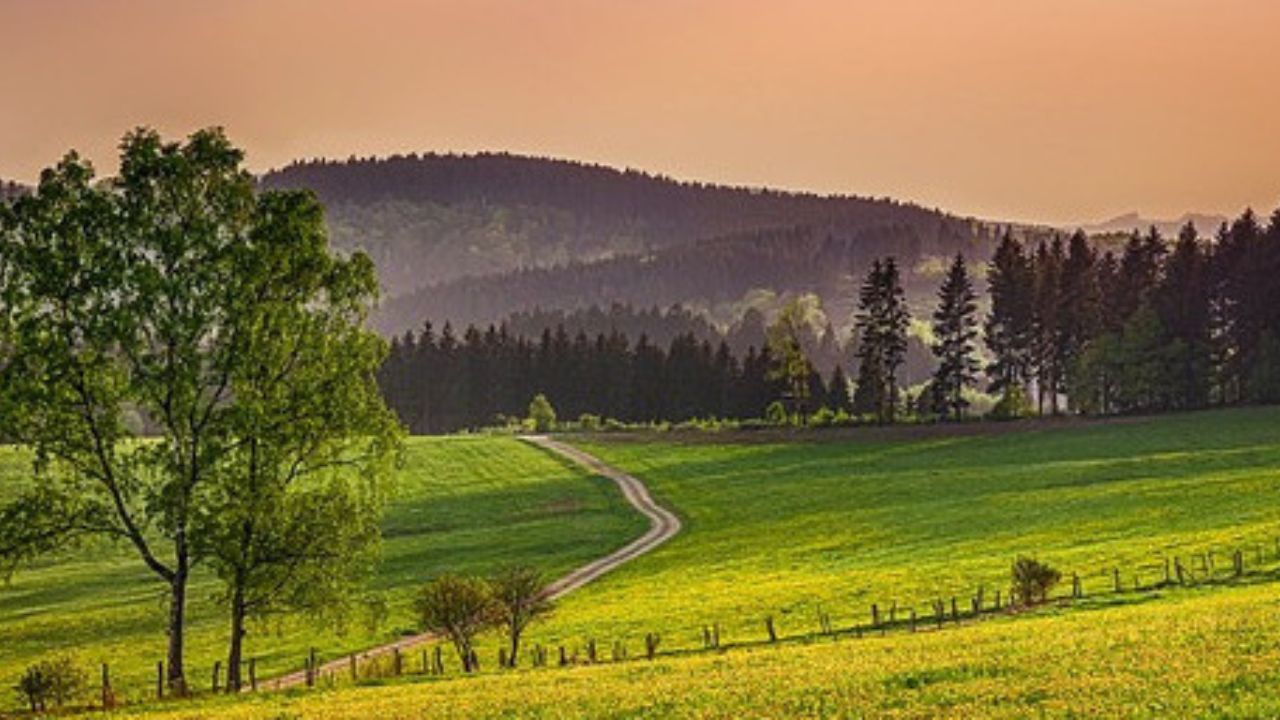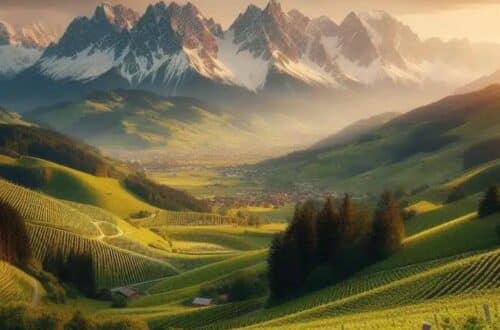
What is Bergland in Austria?
Like you may have read earlier, Austria is mainly covered by the Alps. This explains why the most famous wine regions in Austria are located at the east of the country.
However, just like in Jurassic Park 2 “Life will always find a way”, so does wine! Take a sneak peak in France and the Alps : there is produced some of the best wines of the country and wines with a very unique and strong personality!
So it went the same in Austria. Wine found a way. This region is called : Bergland. “Berg” for the mountain and “land” for … land.
Bergland is divided into five sub-regions. But since we’re here and wine is all (well, nearly) about geology, let’s have a look.
A little Geology lesson
The hard rocks that make up the western and central part of Austria are very diverse and belong to the following major geological formations: the Moldanubicum, the Molasse zone, the Austroalpine region including the Northern Limestone Alps and the Central Eastern Alps, the Penninicum with its flysch and autochthonous rocks, the Helveticum, and the Subpenninicum.
Similar to eastern Austria, there are also young sediment basins within the Alps, as well as geologically younger Quaternary deposits consisting of gravel, sand, silt, and clay. These deposits are found in all formations and extend into current river and lake landscapes.
During the Quaternary ice ages, large parts of the mountains were repeatedly covered by glaciers on a large scale.
Only the northern part of Upper Austria and eastern Carinthia were spared from ice during the last glacial period.
This is where large gravel terraces are located, and in Upper Austria, there are also deposits of loess and clay loess. In mountainous areas, the young sediments are less extensive and exhibit highly varied structures.
Kärnten (170ha)
The centers of viticulture in Carinthia are located in the district of St. Veit with Lake Längsee and the area around Burg Hochosterwitz Castle, in the Lavanttal Valley, in the Feldkirchen area, and around the city of Klagenfurt.
White Burgundy grape varieties dominate, but Sauvignon Blanc, Riesling, Traminer, as well as Zweigelt and Pinot Noir are also cultivated there.
Want to find out more : check this : All you need to know about wines in Kärnten (winebymademoiselle.com)
Öberösterreich (45ha)
After its decline in the 19th century, the Enns region is now experiencing a small renaissance.
Currently, 45 hectares of vineyards are cultivated in the sunny locations of the Danube Valley, the Machland region, the Gaumberg mountain near Linz, along the Eferding Basin, in the central area of Upper Austria, in the hilly Innviertel region, at higher altitudes in the Mühlviertel region, and even in the southern part of the Salzkammergut region.
The main grape varieties are Grüner Veltliner and Chardonnay, as well as Zweigelt and Roesler.
Want to find out more : check out this : All you need to know about wines in Oberösterreich (winebymademoiselle.com)!
Salzburg (7ha)
The first vineyards in Salzburg of our era were planted in 2001 in Großgmain at the foot of Mount Untersberg.
On the Mönchsberg mountain, the “Paris Lodron Zwinger” has thrived since 2008. It is a Frühroter Veltliner that yields approximately 500 bottles from this vineyard, which are sold at the considerable price of €40 (roughly) each, with the proceeds benefiting the Salzburg Scouts.
The Benedictine Abbey of Michaelbeuren has also launched a viticultural project that will include 4,000 grapevines.
Tirol (5ha)
While viticulture holds an important place in South Tyrol, the winegrowers’ association Weinbauverband Nordtirol now has only two dozen members. Even the renowned vineyard in Zirl, dating back to the 14th century, is currently abandoned.
Nevertheless, viticulture in North Tyrol is showing signs of revival. The most well-known active wineries are located in Haiming, Tarrenz, and Silz. Burgundy grape varieties dominate, particularly Chardonnay and Pinot Noir.
Want to know more? Check this out : All you need to know about wines in Tirol (winebymademoiselle.com)
Vorarlberg (10ha)
At one time, 500 hectares of vineyards covered the land of Vorarlberg, especially in the regions of Walgau and Rheintal.
The phylloxera epidemic and the competition from wines of South Tyrol following the construction of the Arlbergbahn railway line took a toll on the vineyards, which almost completely disappeared, except for one vineyard in Röthis.
Today, the association of Vorarlberg winemakers “Verein der Weinbautreibenden Vorarlbergs” has nearly 70 members once again. In the vineyards, Müller-Thurgau, Riesling, and classic Burgundy grapes dominate the range of white wines, while Pinot Noir is ubiquitous for red wines.
Conclusion : What is Bergland in Austria?
Bergland’s geology is characterized by diverse rock formations in its western and central regions, including the Moldanubicum, Molasse zone, Austroalpine region, Penninicum, Helveticum, and Subpenninicum. Young sediment basins and Quaternary deposits of gravel, sand, silt, and clay are found throughout the country. Glaciers covered much of the mountains during the Quaternary ice ages, sparing only certain areas in Upper Austria and eastern Carinthia.
Carinthia has seen an increase in vineyard area, with white Burgundy grape varieties dominating, while Upper Austria is experiencing a viticultural revival with Grüner Veltliner, Chardonnay, Zweigelt, and Roesler as main varieties.
Salzburg, Tyrol, and Vorarlberg have smaller vineyard areas, each with its unique characteristics and grape varieties.
Vorarlberg, once abundant in vineyards, suffered from the phylloxera epidemic but now shows signs of recovery with Müller-Thurgau, Riesling, and classic Burgundy grapes for white wines and Pinot Noir for red wines.








2 Comments
Franck MULARD
Very interesting news!
Mademoiselle
Thank you very much! Let me know if you discover some nice wineries!